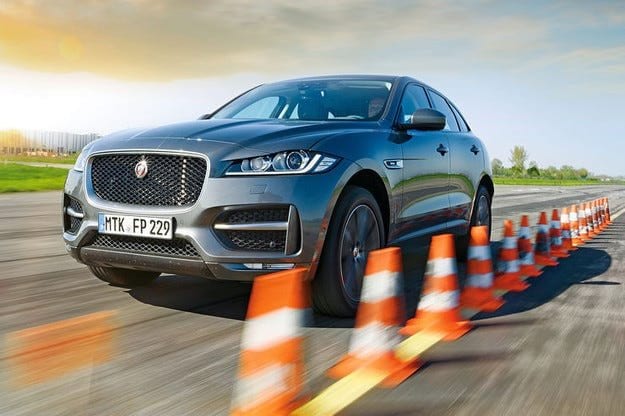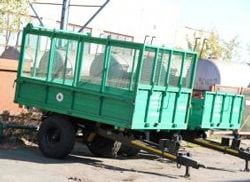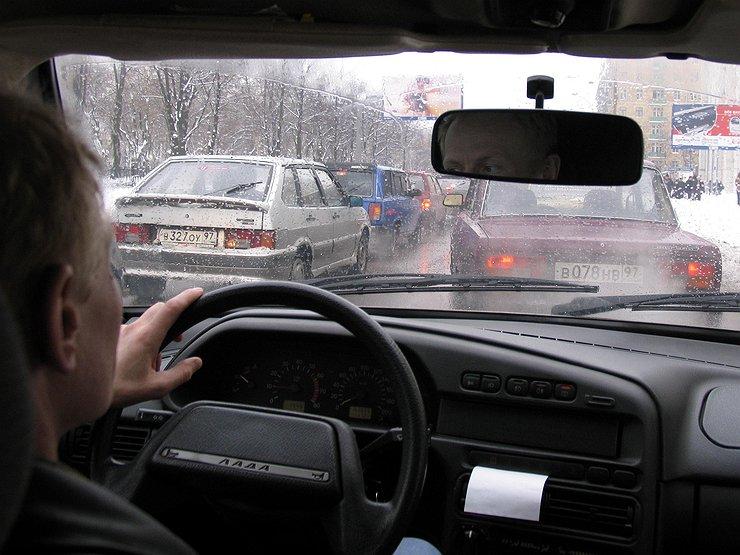
Test drive Jaguar F-Pace 30d four-wheel drive
Content

Test of a three-liter diesel version of the first SUV model in the history of the brand
Much of the testing of SUV models begins with painfully familiar judgments about how this segment is growing more and more, how its importance is becoming more important to the automotive industry, and so on and so forth. The truth, however, is that two decades later, the Toyota RAV4 sparked a fever in this type of vehicle, the truths in question should be clear to everyone by now. In recent years, this has become perhaps the strongest and most enduring trend in the automotive industry - while phenomena such as convertible metal convertible tops fell out of fashion for a short time and practically disappeared from the scene, today there is almost no manufacturer whose model range could be used. no SUV. From now on, everything will look the same jaguar.
The Jaguar F-Pace, which comes to us for the first test with a 6 hp V300 diesel engine, will not be able to compete with strong competitors. In this segment, it is not enough just to be present - here each model must have strong arguments in its favor. Does the F-Pace drive like a real Jaguar on the road? And does its interior match the rich traditions of the brand in the field of noble furniture?
One thing is for sure - inside the car is really spacious. With a body length of 4,73 meters, the Jaguar F-Pace maintains a distance from the five meters of the upper segment, such as the Q7 and X5, but at the same time more than the X3, GLC or Macan. Second-row passengers have plenty of room and can easily travel long distances in the comfortable seat design. Two USB ports and a 12V socket ensure uninterrupted charging of smartphones, tablets and other mobile devices.
Impressive cargo volume
With a nominal volume of 650 liters, the British model's boot is the largest in its class and is also optimally usable thanks to its wide opening and low loading threshold. The three-piece rear seat allows you to conveniently open a gap in the front of the cabin and transport your skis or snowboard. The various parts of the rear seats fold down at the touch of a button and, if required, fully submerge into the floor, creating a flat-bottomed cargo space with a volume of 1740 liters. In the tried and tested R-Sport version, the driver and passenger have excellent sports seats with good lateral support and many adjustable options. The center console is wide, but doesn't limit the feeling of spaciousness. The fact is that despite the high level of comfort and an abundance of space, the mood of the board does not fully meet Jaguar's expectations, due to the not particularly impressive quality of materials. Quite a large number of visible parts are made of plastic that is too tough and too ordinary to look and feel. The quality of some of the buttons, switches, and overall workmanship is also not on par with what you would imagine when you think of the legendary interiors of the brand's past.
However, from this point on, the reviews about the model are almost exclusively positive. The company's engineers have struck an impressive balance between road dynamics and increased driving comfort. Thanks to direct, but by no means nervous driving, the car can be easily and accurately controlled, and lateral body vibrations are very weak. Only in the case of frankly extreme manifestations on the part of the driver can the influence of heavy weight and high center of gravity be noticed.
Despite the large proportion of aluminum alloys in the construction of the body, the scales showed more than two tons of weight of the test sample. Therefore, we are impressed that on the road the mass is almost not felt - the handling is more like a sports wagon than an SUV. The car covers the 18-meter slalom at 60,1 km / h - an achievement not the highest in its class (Porsche Macan S Diesel is about four kilometers per hour faster), but this does not change the good impression of the behavior of the Jaguar F-Pace. The ESP system is very well tuned and responds adequately in critical situations.
The model's particularly effective brakes are extremely impressive: from 100 km / h, the Jaguar stops at a fantastic 34,5 meters, and the braking performance hardly drops under high loads. The AWD system also deserves good reviews, for which there is an additional charge for the base engine. Under normal conditions, the Jaguar F-Pace is rear-wheel-drive only, but the plate clutch can transfer up to 50 percent of the thrust to the front axle in milliseconds when needed. Combined with a maximum torque of 700 Nm, this guarantees pleasant driving moments.
Harmonic Drive
In fact, the character of the Jaguar F-Pace is such that it does not necessarily predispose to sporting events while driving: the low noise level in the cabin and the confident traction of the 6 hp V300 diesel engine. create an extremely pleasant feeling of calm, which is largely due to the famous characteristics of the automatic transmission from the ZF brand. In Sport mode, maintaining low revs is replaced by sharp acceleration even with small changes in the position of the accelerator pedal. However, enabling this mode significantly hardens the shock absorbers, which severely limits comfort. Another reason to prefer the "Normal" mode, in which the suspension filters out irregularities in the road almost without residue. The fact that Jaguar does not offer air suspension for its model is hardly a gap in this case.
In fact, it is with a more relaxed driving style that you can get the typical Jaguar feel aboard the F-Type. While the engine hums with satisfaction at no more than 2000 rpm and its huge power reserve is palpable but not ubiquitous, you can blissfully relax while enjoying the surroundings, especially with the Meridian HiFi speaker system. your favorite music.
With this type of driving, you can easily achieve fuel consumption values well below the average test value of 9,0 l/100 km. In terms of pricing policy, the British were sure that the model was not cheaper than its main competitors, and most of the add-ons that were in demand in this class were paid extra. But in fact, if you still mind long lists of accessories, then obviously you are not aware - this is a common phenomenon, as well as the expansion of the SUV class. German competitors can also call the model, but not cheap - and still set a market record after a market record. Who knows, maybe the same thing will happen to the Jaguar F-Pace.
Text: Boyan Boshnakov, Dirk Gulde
Photo: Ingolf Pompe
Evaluation
Jaguar F-Pace 30d AWD R-Sport
Spacious interior, state-of-the-art infotainment equipment, harmonious drive and a good balance between performance and comfort: Jaguar's first SUV makes its debut really impressive, but, unfortunately, the quality of materials is far from the brand image and tradition.
Body
+ Many two rows of seats
Comfortable nutrition in the gym
Large and practical trunk
High torsion resistance of the body
Plenty of room for items
– Disappointing quality of materials in the interior
Partially restricted view from the driver's seat
Illegal management of some functions
Comfort
+ Very good suspension comfort
Low noise level in the cabin
Comfortable and well-positioned seats
Engine / transmission
+ Diesel V6 with powerful traction and smooth running
– Dynamic performance is not as brilliant as 300 hp
Travel behavior
+ Precise steering
Safe conductivity
Weak lateral body vibrations
safety
+ Extremely powerful and efficient brakes
Safe driving
- The choice of assistance systems is not very rich
ecology
+ Considering the size of the car, the fuel consumption is good in terms of fuel consumption and CO2 emissions
Costs
+ Good warranty conditions
- High price
technical details
| Jaguar F-Pace 30d AWD R-Sport | |
|---|---|
| Working volume | 2993 cc cm |
| Power | 221 kW (300 hp) at 5400 rpm |
| Maximum torque | 700 Nm at 2000 rpm |
| Acceleration 0-100 km / h | 6,7 with |
| Braking distances at a speed of 100 km / h | 34,5 m |
| full speed | 241 km / h |
| Average consumption fuel in the test | 9,0 l / 100 km |
| Base Price | 131 180 levov |

